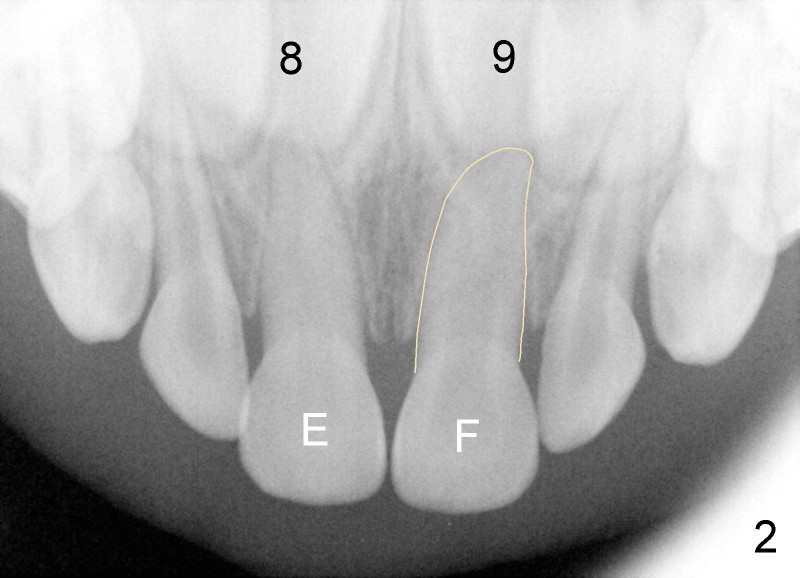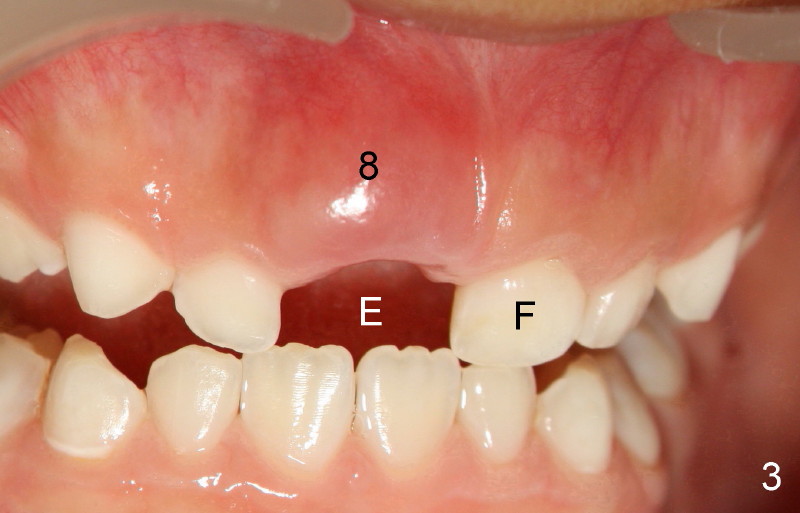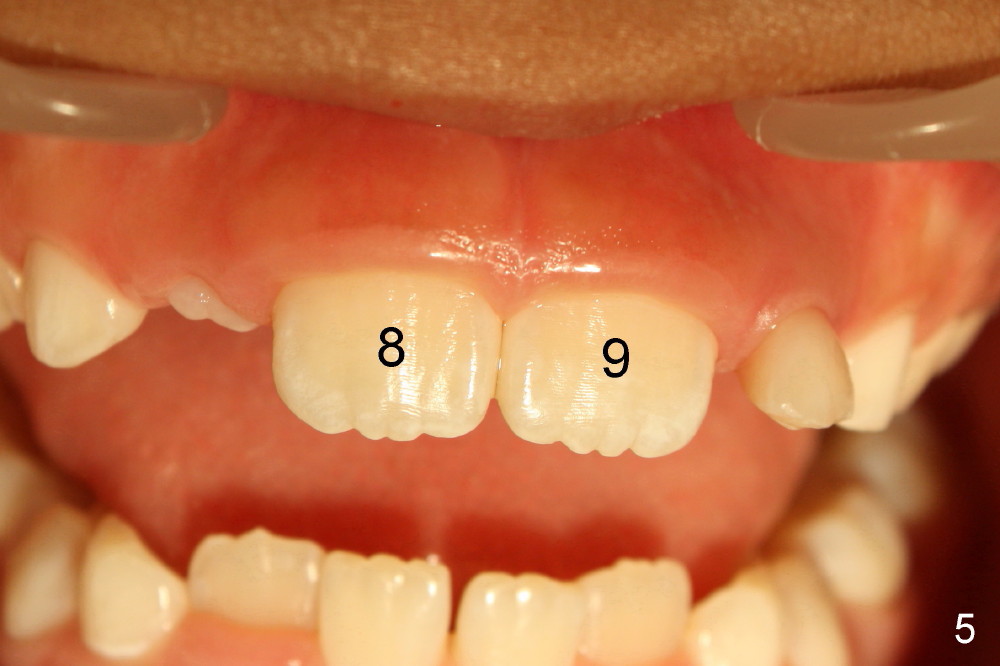



 |
 |
 |
|
 |
Root Resorption
Seven-year-old Xavier wiggled out his first baby tooth by himself recently (Fig.3 E). The previous two were extracted by the dentist. His mom wonders why the root is so short. Is there any root still inside the gums?
Four years ago, Xavier fell and traumatized one of the front teeth (Fig.1 E). It turns dark. An X-ray was taken to rule out root fracture. In fact two front teeth have normal, long roots (Fig.2 E, F; yellow outline being one of them). Above these two long roots are permanent front teeth (8,9).
In the last 4 years, the permanent front teeth have grown downward (Fig.4 arrow) and pressed against the roots of the baby teeth. The latter have undergone a process called root resorption, root being shortened or eaten. Finally the roots becomes so short that they either fall out (E) or is ready to be out (F).
Therefore it is quite normal for the root of a fallen baby tooth to be short. The underlying permanent tooth is ready to burst out (Fig.3: 8).
The two permanent teeth are normal in position and appearance one year later when the kid is eight years old (Fig.5: #8,9). It is lucky for him that the tooth #8 is not discolored. Sometimes the discolored baby tooth (for example E in Fig.1) can cause discoloration of the developing adult tooth underneath (#8 in Fig.2). The latter does not happen probably because the baby tooth is not infected. In all, we need to watch discolored baby tooth. If it gets infected, extraction is necessary.
Xin Wei, DDS, PhD, MS 1st edition 05/29/2012, last revision 06/02/2013